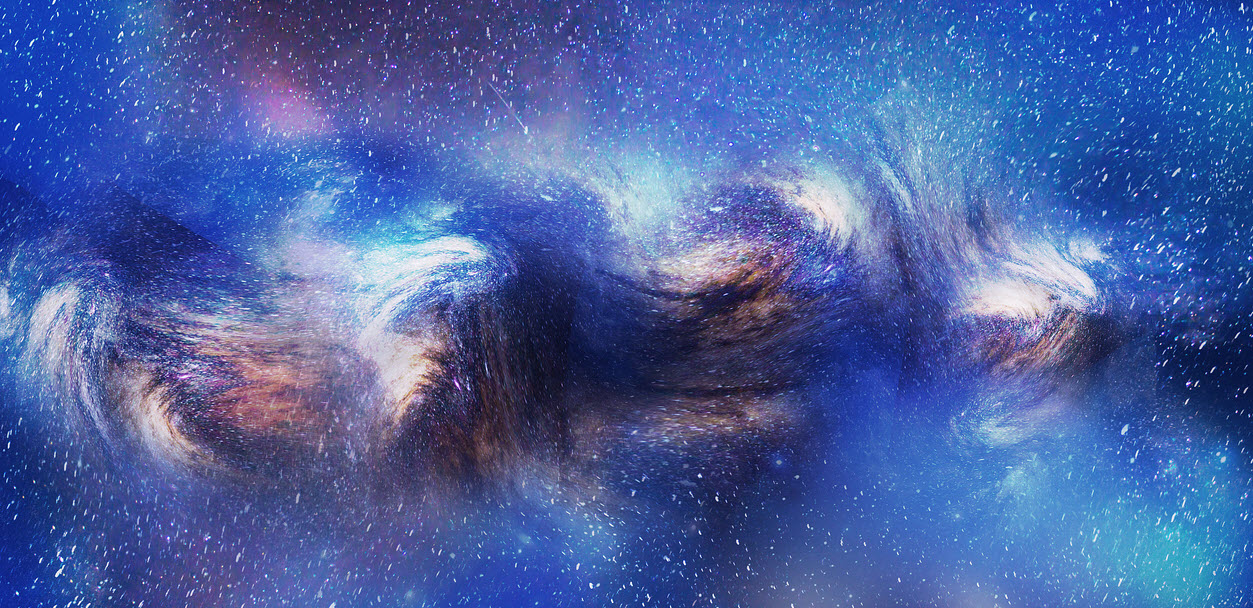| By K. Lee Lerner |
Spacetime describes a universe where the tangible and traditional dimensions of space (e.g., length, width, and height) fuse with a dimension of time to create a four-dimensional universe. Since Albert Einstein advanced his theories of special and general relativity more than a century ago, spacetime has become a foundational concept in physics. While Einstein’s theories have been validated by many experiments over the years, new technologies and discoveries allow scientists to keep testing these venerable and foundational theories. New technological advances and discoveries not only sharpen our understanding of the power and broad application of Einstein’s theories to the large-scale structure and workings of the cosmos but also provide insights into potential reconciliations with quantum theory, which explains the universe at the other extreme of scale—the realm of fundamental particles.
Spacetime is inherently mathematical, so conceptualizing it can be challenging. While no single analogy is perfect, it’s often helpful to think of spacetime as a sheet of fabric stretched taut. This fabric of spacetime can then be curved by mass and energy (represented by a heavy ball that sinks into the sheet to create depressions or wells in the sheet). This curvature in the sheet represents the phenomena we know as gravity.
International teams of scientists recently published multiple papers in leading journals confirming the detection of the gravitational waves that are also a consequence of Einstein’s general theory of relativity. The waves are like ripples that travel across the fabric of spacetime. The crests of gravitational waves may be many years apart, but after more than a decade of observations, scientists were able to observe and measure slight variations in signals from pulsars that are otherwise as regular as the most precise atomic clocks. These variations conform to predicted interactions with gravitational waves.
The existence of gravitational waves of higher frequency was confirmed in 2016 after four decades of observations conducted by LIGO, the Laser Interferometer Gravitational-Wave Observatory. The new findings now allow astronomers to hypothesize that supermassive black holes spread across a vast universe may be the most likely masses and sources of energy creating background gravitational waves, which apparently roll throughout the cosmos like waves roll across a choppy sea.
Without mass or energy to curve spacetime, objects—assuming no other forces are acting upon them—would naturally move in straight lines along the fabric of spacetime. But when mass and energy curve spacetime, objects are drawn to the depressions or the wells created. Accordingly, in curved spacetime (near massive objects), the path a moving object would naturally take is along a curve. We account for this curvature by saying the force of gravity acted upon an object or objects.
The curvature of spacetime fits with the observed curved path of gravitational trajectories (the arc followed by a ball thrown, shell fired, etc.) by postulating that objects are actually moving along the straightest-possible line in the curved spacetime of a gravitational field. It also explains the path planets take about their suns and the paths of very small fundamental particles. Time itself becomes a function that can be dilated (lengthened) or contracted by the velocities and paths of objects relative to one another.
The curvature of spacetime by mass and energy in the cosmos offers one explanation for gravity, but it is important to note that a precise explanation of gravity itself, in terms of what it is and how it acts as a force, still eludes modern physics. Depending on scale, observational data fit both the conceptualization of gravitational force as resulting from curvatures in spacetime or as force mediated by a potential vector of gravity (i.e., the undiscovered graviton, a hypothetical particle that could mediate the force of gravitational interaction).
 About the Author
About the Author
K. Lee Lerner is a writer, editor, and aviator who, along with Brenda Wilmoth Lerner, is the editor of the Gale Encyclopedia of Espionage, Intelligence, and Security; Climate Change: In Context; and many other award-winning books and articles on science, technology, and a range of global issues. A full bio and list of his work may be found at https://scholar.harvard.edu/kleelerner and https://harvard.academia.edu/KLeeLerner/.




